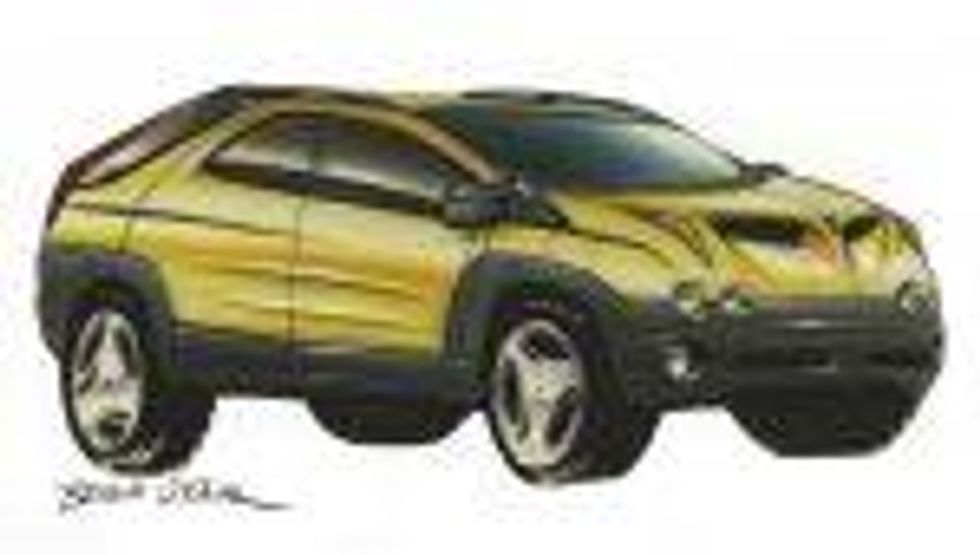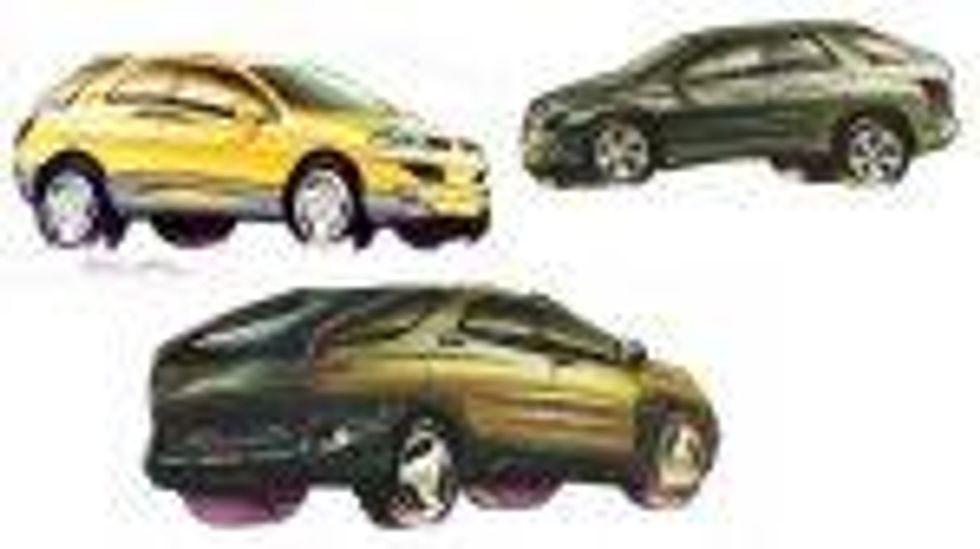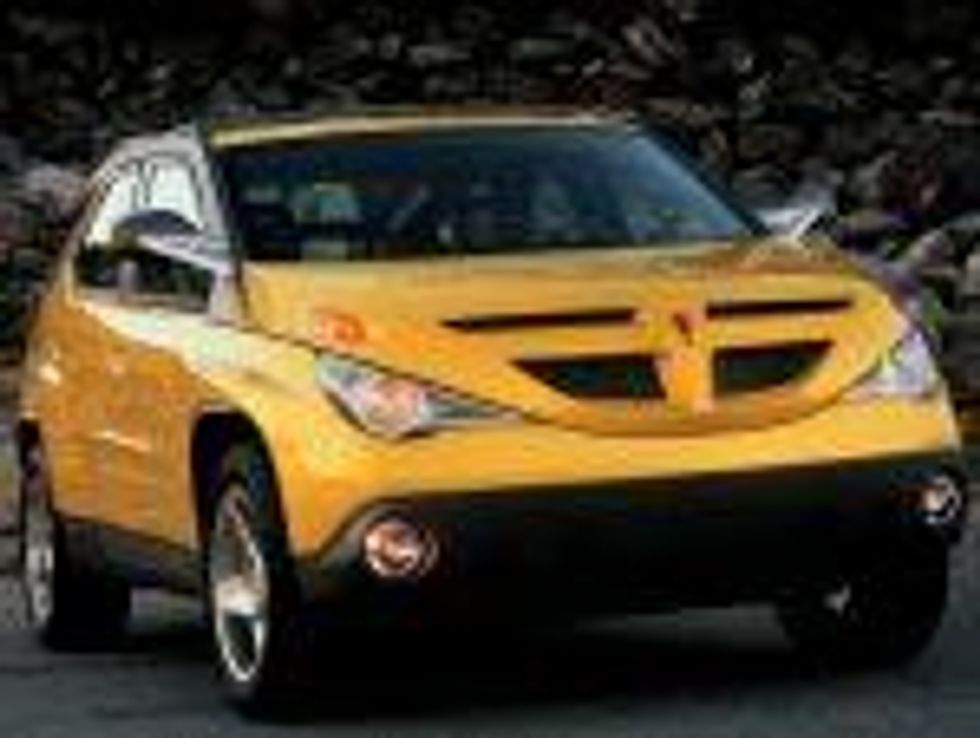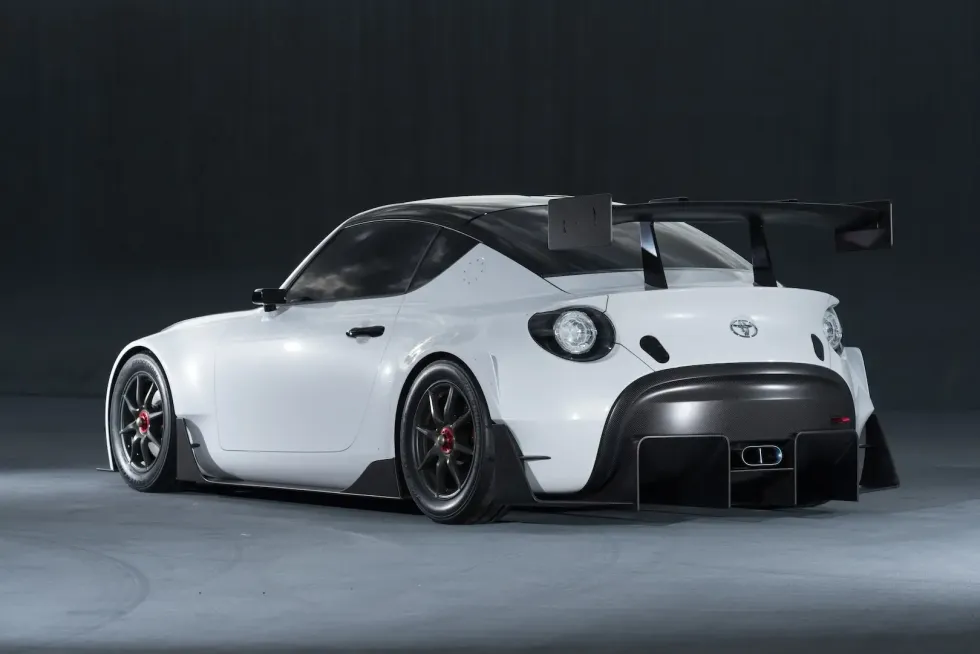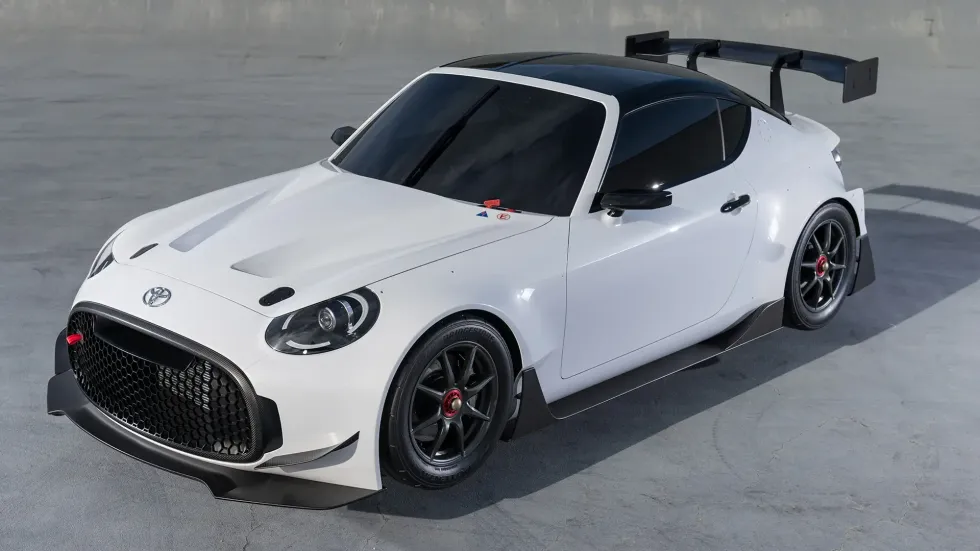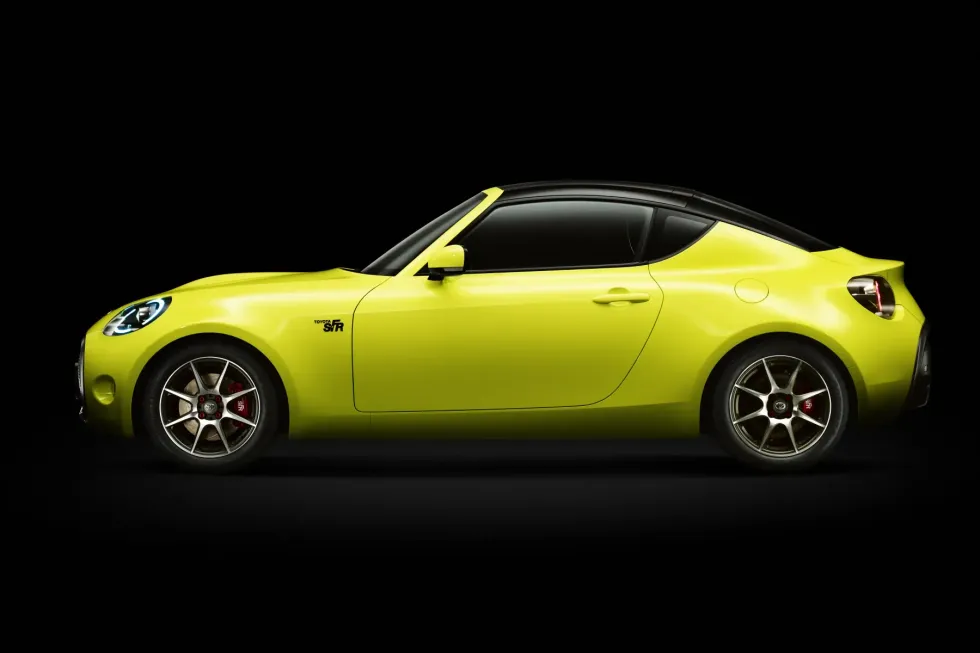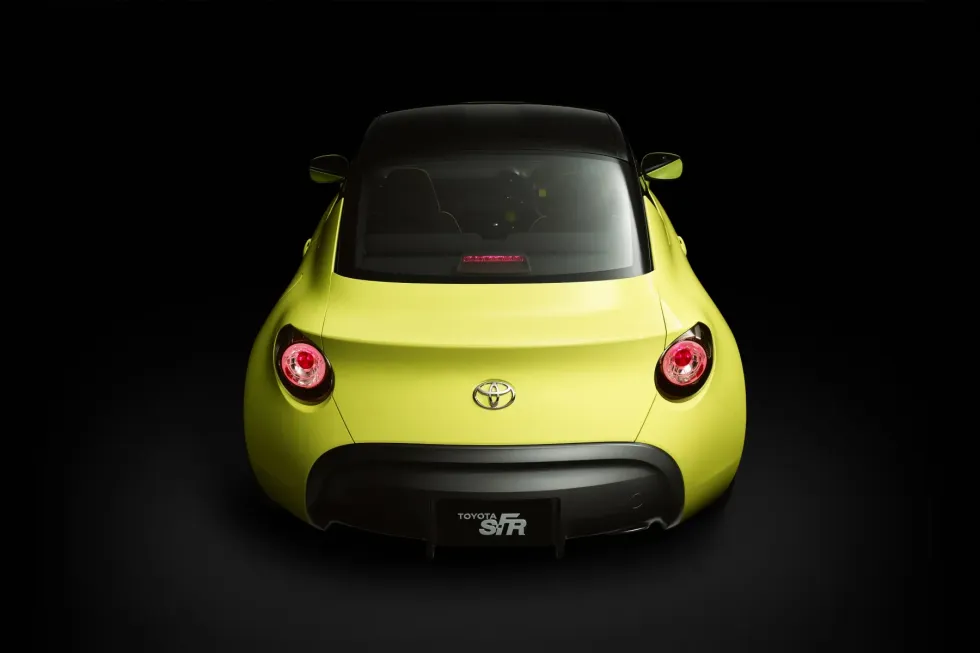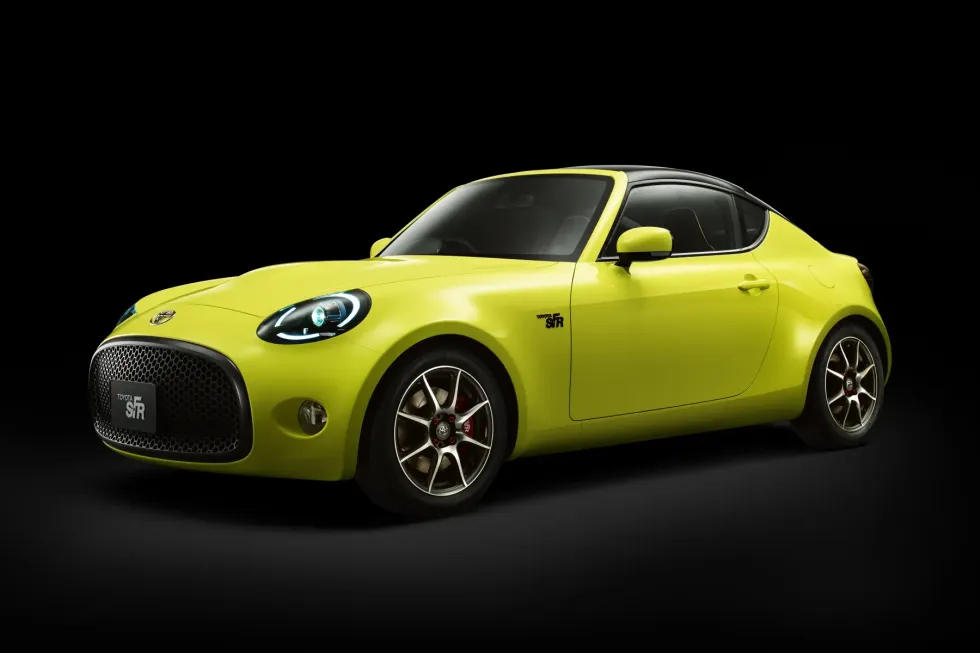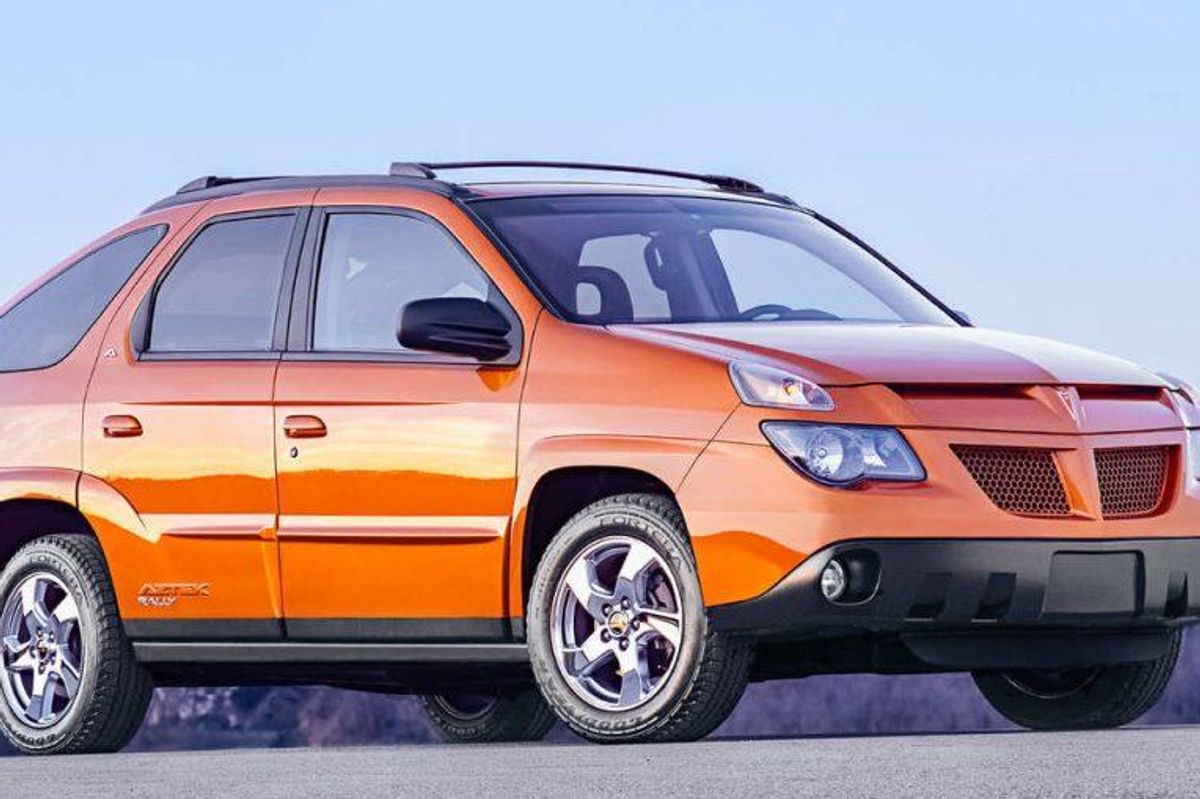
Buy
Resources
Entertainment
Magazine
Community
This story won't mention Walter White. Nor will it give glory to the pile-on that has declared the Pontiac Aztek the ugliest vehicle ever built. And it certainly won't try to change anybody's love/hatred of the Aztek; taste is subjective, after all. It will, however, attempt to explain how the Aztek came to stand out in the automotive marketplace and in subsequent automotive culture, for better or worse.
By the mid-1990s, GM had fallen into a torpor. The Roger Smith era, which ended with his retirement in 1990, left the company inflexible and ill-prepared to handle an increasingly dynamic automotive marketplace. Smith's successor, Robert Stempel, rose through the ranks of GM from its engineering team and seemed to understand the product side of the business, but not the business side of the business, which left the company in the hands of John G. Smale and Jack Smith, both accomplished businessmen who came from Procter & Gamble and from GM's planning and operations side, respectively.
Smale and Jack Smith, ready to turn GM around, turned their eye toward product in 1994. "Smale decided to bring the world's biggest automaker a dose of the give-the-people-what-they-want ethic that had animated Smale's old company, Procter & Gamble Co.," Jonathan Weisman wrote for the Washington Post. "And what the people wanted was sexy, edgy and a bit off-key; in short, a head-turner."
Specifically, as Bloomberg's David Welch wrote, "GM wanted to prove it could transcend its engineering-dominated culture and design a hip, affordable vehicle for young buyers and move it quickly through a traditionally slow-moving bureaucracy."
Out at GM's West Coast Advanced Concept Center in Thousand Oaks, California, Tom Peters, then the director of the ACC, took Smale's directive to his team, which was already investigating "active outdoor lifestyle" vehicles much like the Pontiac Stinger from a few years prior. As he told TFL, he asked his team, "What if you took a Camaro and a Blazer and put it in a blender?" and called the resulting The North Face jacket-inspired sporty all-wheel-drive people and gear hauler - based on drawings by Brigid O'Kane - the Bear Claw.
"The initial Aztek 'Bear Claw' concept was based on an S-series full-frame platform with four-wheel drive, an off-road wheel/tire package and an aggressively styled body featuring big flared wheel arches, a low roof and a wide track," he told TFL.
It generated plenty of excitement within GM. Perhaps too much excitement, as Bob Lutz later wrote for Road & Track.
The guy in charge of product development was Don Hackworth, an old-school guy from the tradition of shouts, browbeating, and by-God-I-want-it-done. He said, "Look. We've all made up our minds that the Aztek is gonna be a winner. It's gonna astound the world. I don't want any negative comments about this vehicle. None. Anybody who has bad opinions about it, I want them off the team."
Such an attitude might have benefited the Aztek had it hewed close to the truck-based Bear Claw concept. However, as Weisman wrote, "General Motors' culture took over from there. Design would be by committee, the focus groups extensive. And production would have to stick to a tight budget."
The latter constraint meant that, instead of basing the resulting production vehicle on the S/T chassis, the Aztek would instead have to run on the GMT200/U-body minivan platform - the second-generation front-wheel-drive successors to the so-called dustbuster minivans.
"This created some serious design challenges and forced us to move away from the original design intent," Peters told TFL. "For example, the cowl and roof had to be raised and the body narrowed. This caused the dash to axle dimension to be raised and moved forward while the minivans small wheels and tires forced the wheel arches to become smaller."
Then, as Lutz pointed out, even though GM submitted the Aztek to plenty of focus groups, GM brass discounted the criticisms levied at the design and at the same time encouraged the designers, engineers, and product planners working on the Aztek to focus on meeting internal development goals and timelines. "Everybody wanted to will this thing to succeed, and it didn't work," he wrote. "All the emotional commitment and pride in the program was that it achieved all its internal objectives."
The Aztek concept arrived in 1999 with the focus on active outdoor lifestyles intact and with Peters himself introducing it. Though not quite the Bear Claw, it was still hailed for its aggressive looks and for taking on the nascent crossover category.
A year later, the production Aztek landed as a late 2000 model year vehicle with almost all of the aggressiveness of the 1999 concept erased and with Pontiac's massive body cladding installed. It came with a tent, sure - just like the Vega and the Nova did in the Seventies - along with all-wheel drive and the lauded removable cooler that doubled as an armrest, but sales did not proceed apace. According to Welch, within months GM started offering rebates to move the Aztek off lots and reduced its annual sales forecast from 75,000 to 50,000. Just 11,200 sold in the short 2000 model year and no more than 28,000 in each of the next three years.
"That's a rough start for a vehicle that GM had hoped would signal a design renaissance," Welch wrote.

Its disappointing sales led GM to show a lowered Aztek with a longitudinal V-8 swap and reconfigured wheel arches to fit bigger tires at SEMA in 2003 or so - a concept that probably turned more heads than any Aztek detractor thought possible - but the sales slide continued, and Pontiac canceled the Aztek in 2005. GM sold nearly three times as many of the Aztek's platform mate, the Buick Rendezvous.
Amid the ubiquitous criticism of the Aztek, it did find some earnest appreciation. Owner praise led to high marks from the American Customer Satisfaction Index and from J.D. Power and Associates. And, as Matthew DeBord and others have since noted, GM (perhaps inadvertently) was ahead of the crossover curve with the Aztek, leveraging the legacy of the Stinger and Peters's Camaro-Blazer fusion concept into an entirely new segment that now dominates the automotive landscape.
Recent
Toyota
Toyota is pulling out all the stops to compete with the likes of affordable sports cars like the Mazda Miata. The automaker reportedly plans to put the S-FR concept car, originally debuted in 2015, into production. With potential release dates slated for early-2026 or early-2027, perhaps Miata may not always be the answer.
A new report out of Japan confirmed that the Toyota S-FR concept, first seen at the 2015 Tokyo Motor Show, will hit the market to challenge the entry-level sports car segment. Forbes backs up this claim via its print edition of Best Car. According to the report, the Toyota S-FR will be produced in partnership with Daihatsu, a wholly owned subsidiary of Toyota, and Suzuki, of which the Toyota Motor Corporation owns 4.94 percent.
From the sounds of it, the S-FR will share a platform with the Daihatsu Vision Copen that was revealed at the 2023 Tokyo Mobility Show. It will supposedly feature the same two-plus-two seating as displayed in the concept, but will be even smaller and lighter than the Toyota 86 model.
The Toyota S-FR will reportedly get its power from a turbocharged three-cylinder engine that will send around 150 horsepower to the rear wheels. If these figures sound familiar, you may have also heard the rumors about Toyota reviving the Starlet with a GR performance version that has similar specs; a 1.3-liter engine producing 150 horsepower.
Like most concept cars, the S-FR’s design will see some changes before production, in this case reports point specifically to a smaller grille and altered headlights. Whether or not the production model will incorporate the concept’s aero elements is unknown.
Toyota’s target MSRP of $22,700 for the S-FR could potentially beat out the Mazda Miata by around $6,000. Whether or not the S-FR will be sold in the States to potentially compete with Toyota’s existing GR86 model’s sales is also, sadly, unknown, but we have our fingers crossed.
Keep reading...Show Less
Toyota
JDM fans rejoice: A recent report out of Japan states that Toyota could be adding to its GR lineup with a front-wheel drive Toyota Starlet hatchback. The reborn Toyota Starlet will reportedly join the ranks of the existing GR Supra, GR 86, GR Yaris, and GR Corolla models.
Built in partnership with Gazoo Racing, Toyota’s motorsport division, the new Starlet will reportedly be built as a rally-focused machine, which makes sense when you consider Toyota’s history in the Rally 4 class. The terrain-dominating Starlet hatchback would compete against Toyota’s rally rivals, such as the Ford Fiesta, Renault Clio, and Peugeot 208.
This information comes from the Japanese car information magazine Best Car. Of course, the production Starlet GR wouldn’t have the rally car’s wide fenders and aggressive aerodynamics, but both versions would likely be powered by a 1.6-liter or 1.3-liter turbocharged three-cylinder engine. It’s our hope that it would be offered with the choice of a six-speed manual transmission or an eight-speed automatic, which would send around 150 horsepower to the front wheels. The subcompact hatch will supposedly weigh in at a mere 2,160 pounds, 727 pounds lighter than a Yaris GR.
The new Toyota Starlet could reportedly fetch between 2.5 million yen and 2.8 million yen, around $16,000 and $18,000, respectively, but if it does go into production, don’t expect to see the model hit the U.S. market anytime soon.
Keep reading...Show Less
